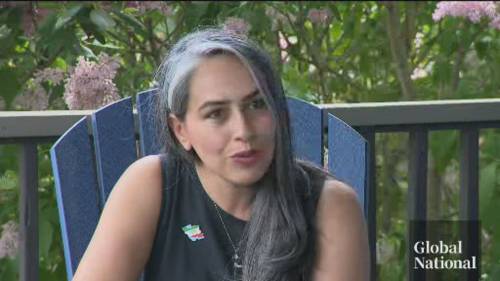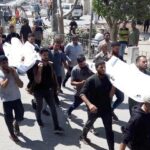I stepped into a sea of red, white, and green flags outside the Vancouver Art Gallery on Saturday. Rain fell steadily, but it didn’t dampen the resolve of hundreds of Iranian-Canadians who gathered to condemn the Islamic Republic’s leadership after a tumultuous week that saw Iran launch missiles at Israel.
“I’ve been protesting since I was 17 years old,” Hamed Esmaeilion told me as we sheltered under the gallery’s concrete overhang. Esmaeilion, who lost his wife and daughter in the 2020 downing of Flight PS752 by Iranian forces, has become a prominent voice in the diaspora community. “We are tired of this regime exporting terrorism and creating chaos in the Middle East.”
The Vancouver demonstration was one of several across Canada this weekend, with similar gatherings in Toronto, Montreal, and Ottawa. These protests come at a particularly tense moment in Middle East relations, with Iran launching over 300 missiles and drones at Israel on April 13 – its first direct attack on Israeli territory.
For many in attendance, the protest represented something deeper than opposition to a single military action. “This regime has oppressed Iranians for 45 years,” said Nazanin Afshin-Jam MacKay, co-founder of Stop Child Executions. “What you’re seeing now with attacks on Israel is the same pattern of violence they’ve inflicted on their own people.”
The Canadian government formally designated Iran’s Islamic Revolutionary Guard Corps (IRGC) as a terrorist entity in 2018, but protesters demanded more comprehensive sanctions against the regime’s leadership. According to Global Affairs Canada, bilateral trade between Canada and Iran has declined by over 85% since sanctions were first imposed in 2012.
What struck me most was the diversity of the crowd – young students who left Iran after the 2022 Woman, Life, Freedom protests stood alongside older exiles who fled following the 1979 revolution. Their stories formed a living timeline of Iranian political struggle.
“I haven’t been able to see my family for eight years,” said Parisa Mahboubi, a 32-year-old software engineer who moved to Vancouver in 2016. “Every time the regime creates international tensions, it makes it harder for ordinary Iranians both inside and outside the country.”
The recent escalation comes amid ongoing internal unrest in Iran. The death of Mahsa Amini in 2022 while in the custody of the morality police triggered nationwide protests, resulting in over 500 civilian deaths and thousands of arrests, according to Human Rights Watch. The regime’s brutal crackdown included executions of protesters and imprisonment of journalists.
Speakers at the Vancouver rally emphasized that Iran’s aggressive foreign policy serves as a distraction from domestic problems. The country faces inflation exceeding 40%, according to the International Monetary Fund, while youth unemployment hovers around 27%.
“When the regime feels threatened internally, it creates external enemies,” explained Ali Dizboni, a political science professor attending the rally. “It’s a classic authoritarian playbook – unite people against a foreign threat when your legitimacy is crumbling.”
For many Iranian-Canadians, the struggle feels increasingly personal. Canada is home to approximately 213,000 people of Iranian descent according to Statistics Canada, with many maintaining close ties to family in Iran. The diaspora has become increasingly vocal as tensions rise.
“My cousin was arrested last year for posting on social media,” a young woman who asked to be identified only as Mina told me, her voice breaking. “We don’t know which prison she’s in. This is why we cannot stay silent when the regime acts aggressively anywhere.”
As the afternoon progressed, protesters formed a human chain around the art gallery. They chanted in both Persian and English: “Woman, Life, Freedom” – the slogan that became synonymous with the 2022 uprising.
Amid concerns about potential retaliation against protesters’ families in Iran, many covered their faces or used pseudonyms when speaking to media. The fear is well-founded; Amnesty International has documented cases of harassment of Iranian diaspora activists’ relatives still living in Iran.
Despite these fears, the mood remained defiantly hopeful. Children painted small flags while older attendees shared stories of pre-revolution Iran with younger generations.
“The world would be a better place without this regime,” Esmaeilion said as the protest wound down. “Not just for Iranians, but for everyone in the Middle East and beyond.”
As I left the rally, what remained with me wasn’t just the political messaging, but the profound sense of community in exile – a diaspora united not only in opposition to a regime, but in preserving a vision of Iran’s potential future. For these Iranian-Canadians, each protest is both resistance and remembrance, a way to ensure their homeland’s struggle isn’t forgotten amid the larger geopolitical chess game playing out across the Middle East.






